Imagine a lush hanging garden full of crisp, fresh lettuce—thriving without daily watering, soil mess, or constant maintenance. Sounds impossible, right? Well, it’s not! Many innovative gardeners are now growing lettuce in hanging systems that require little to no watering at all, thanks to clever design and modern hydroponic principles.
This new approach combines the beauty of vertical gardening with the efficiency of water-conserving technology. The result is a self-sustaining hanging garden that produces more lettuce in less space and with minimal effort.
In this article, you’ll learn how this system works, what makes it so productive, and how you can build your own hanging lettuce garden at home that thrives even without traditional watering.
The Idea Behind a Water-Free Hanging Garden
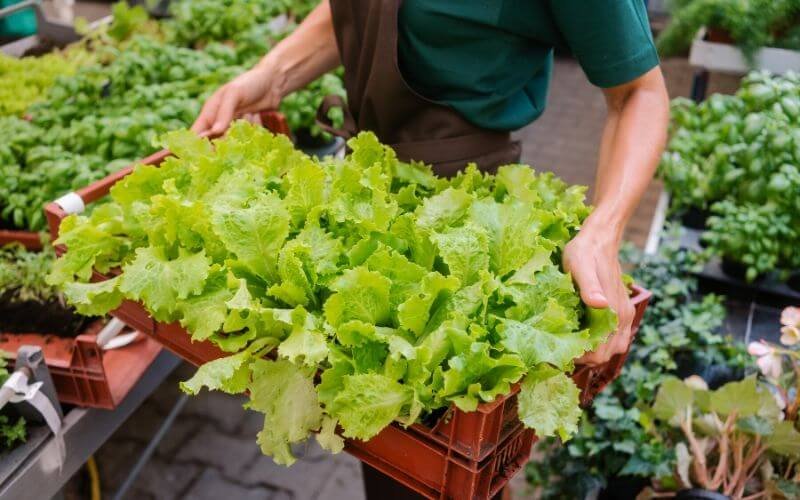
Growing lettuce without daily watering may sound magical, but it’s rooted in science. The system works on principles similar to hydroponics or wick irrigation, where plants get their nutrients and moisture directly through controlled water delivery systems.
Instead of drenching soil every day, these hanging gardens use:
- Water-retaining materials or nutrient films to supply moisture slowly.
- Self-watering reservoirs that recycle and conserve water.
- Closed-loop systems that prevent water loss through evaporation.
Essentially, your lettuce plants have access to all the moisture they need—without a drop going to waste.
Why Grow Lettuce in a Hanging Garden?
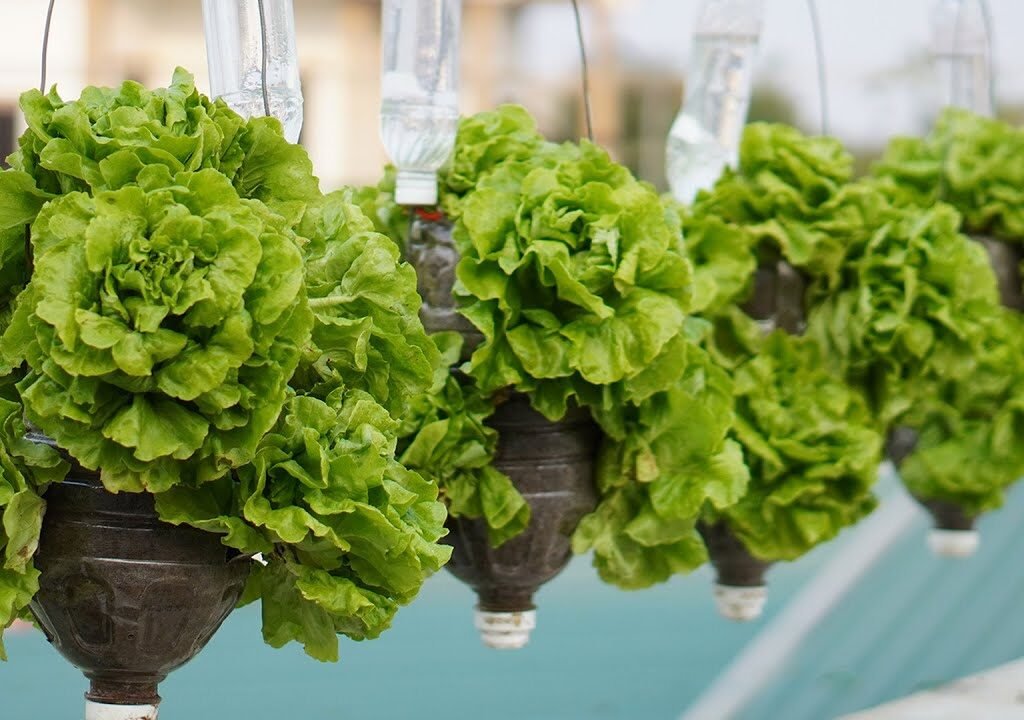
Lettuce is one of the best vegetables for hanging gardens because it’s lightweight, fast-growing, and thrives in controlled environments. Here are the main benefits of growing it this way:
- No Soil Mess: The system uses a soilless medium, keeping your balcony, patio, or indoor area clean.
- No Daily Watering: Perfect for busy gardeners or those living in dry climates.
- High Productivity: Plants grow faster and produce more due to continuous moisture and nutrients.
- Space Efficient: Vertical design saves ground space while maximizing yield.
- Pest-Free Gardening: Hanging planters are less accessible to insects and soil-borne pests.
- Sustainable and Eco-Friendly: Uses up to 90% less water compared to traditional gardening.
So, if you want a garden that’s low-maintenance, attractive, and super-productive, this is the perfect setup.
Materials You’ll Need
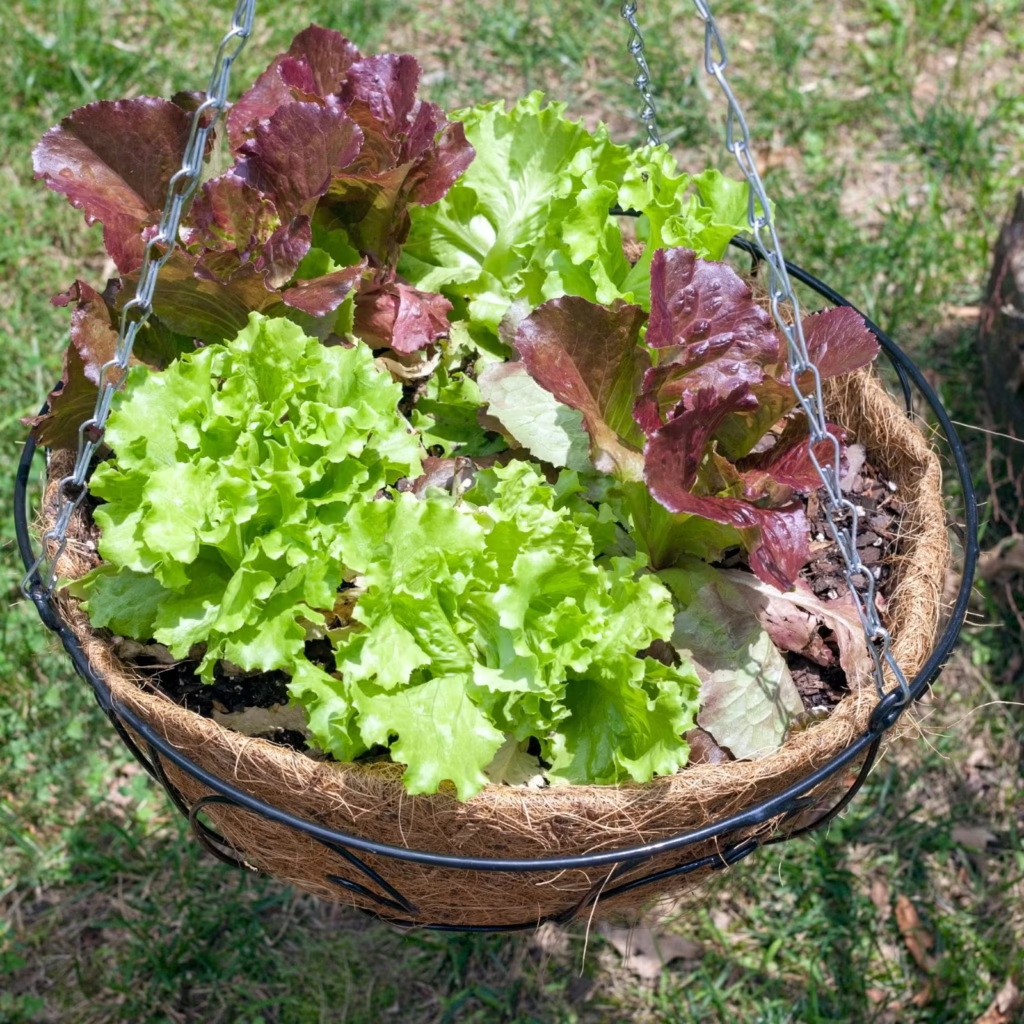
You don’t need expensive equipment to create your own hanging lettuce garden. In fact, most materials can be found at home or at your local garden supply store.
Here’s what you’ll need:
- Hanging Containers or Bottles: Plastic bottles, hanging baskets, or PVC pipes work well.
- Growing Medium: Coco coir, perlite, or peat moss (light, water-retaining materials).
- Nutrient Solution: A hydroponic fertilizer that provides all essential plant nutrients.
- Wicking Material (optional): Cotton rope, felt strips, or capillary mat for self-watering systems.
- Reservoir or Water Tank: To hold and recycle the nutrient solution.
- Air Pump (optional): For oxygenating water if using a hydroponic setup.
- Seedlings or Seeds: Lettuce varieties like butterhead, romaine, or leaf lettuce.
- Drill or Cutter: To make holes in containers for drainage and plant placement.
- Support Hooks or Frame: To hang your garden vertically.
Step-by-Step Guide to Building a Hanging Lettuce Garden
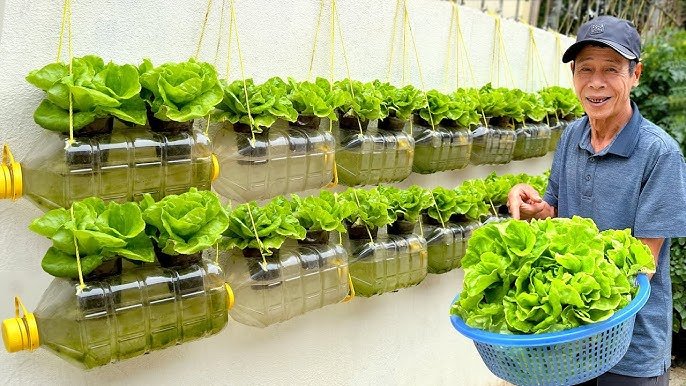
Let’s go through how to build your own system that lets you grow lettuce easily—without constant watering.
Step 1: Choose the Right Location
Lettuce loves cool temperatures and indirect sunlight. Choose a spot that gets about 4–6 hours of filtered light daily—like a balcony, patio, or near a sunny window.
Avoid areas with strong wind or excessive heat, as they can dry out the leaves and growing medium quickly.
Step 2: Prepare the Hanging Containers
You can use recycled plastic bottles, PVC tubes, or hanging pots.
- Cut a hole near the top for planting and a smaller hole at the bottom for drainage.
- If using bottles, cut off the top and invert it into the base to create a self-watering design.
- For aesthetic appeal, you can paint or decorate the containers.
Hang them securely using sturdy rope, wire, or a metal chain. Make sure the setup can hold the combined weight of water, medium, and plants.
Step 3: Add the Growing Medium
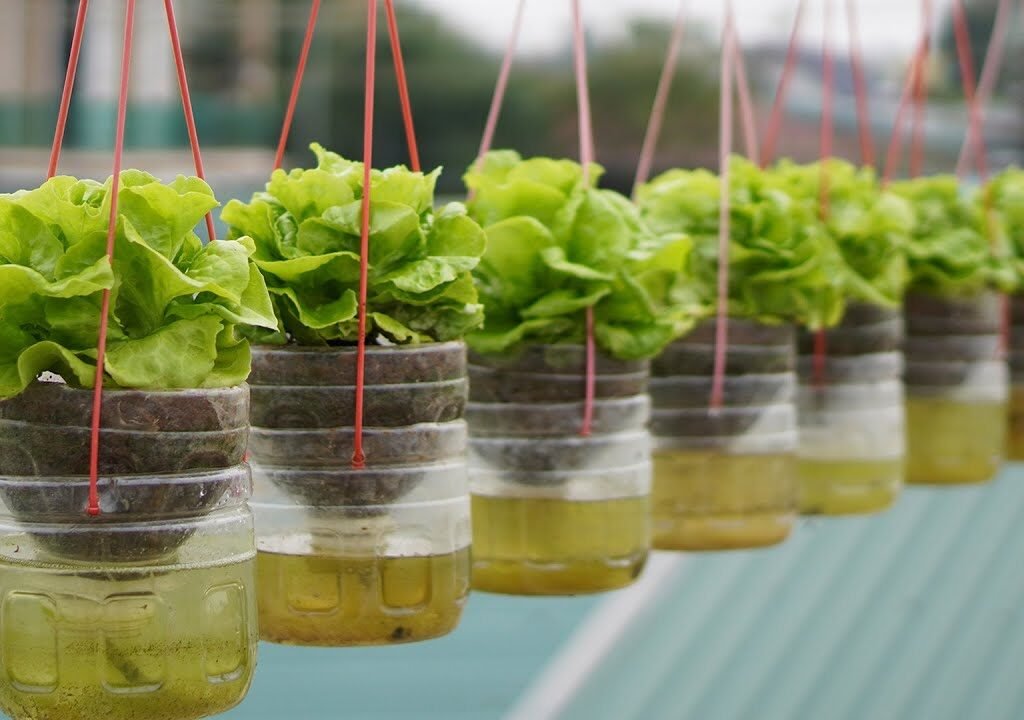
Fill each container with your soilless growing medium—like coco coir, vermiculite, or perlite. These materials hold moisture well while allowing good air circulation for the roots.
If you’re building a self-watering system, insert a wick (a cotton rope or fabric strip) from the reservoir below into the growing medium. The wick will draw water upward as the plants need it.
Step 4: Set Up the Water or Nutrient Reservoir
Place a water reservoir (like a plastic tub or bucket) underneath your hanging containers. Connect small tubes or wicks from the reservoir to each hanging planter.
If you’re going hydroponic, fill the reservoir with a nutrient-rich solution and install an air pump to keep the water oxygenated and prevent stagnation.
This ensures your lettuce roots get a steady supply of moisture and nutrients—without manual watering.
Step 5: Plant Your Lettuce
You can either start from seeds or use seedlings.
- If starting from seeds, sprinkle a few onto the moist growing medium and cover lightly.
- If using seedlings, gently transplant them into the containers, ensuring the roots are in contact with the moist medium.
Lettuce germinates quickly (within 5–7 days), and you’ll see visible growth in about two weeks.
Step 6: Monitor and Maintain
While this system reduces watering needs drastically, a little monitoring goes a long way:
- Check water levels in your reservoir every few days and refill as needed.
- Maintain nutrient strength—change or top up the solution every 2–3 weeks.
- Ensure good airflow to prevent mold or fungal issues.
- Harvest regularly—this encourages new leaves to sprout continuously.
With this low-maintenance system, you’ll have an abundant harvest of fresh lettuce without ever worrying about forgetting to water!
How This System Saves Water
The reason this hanging garden doesn’t require daily watering lies in its closed-loop water system.
- Water that drains from the planters is collected and recirculated.
- The medium retains just enough moisture for root absorption.
- Evaporation is minimal due to limited surface exposure.
Compared to traditional soil gardening, this setup can save up to 95% of water—a huge win for eco-friendly and urban gardening.
Why This Method Produces High Yields
Gardeners who’ve tried this system often report higher lettuce yields than in soil gardens. Here’s why:
- Consistent Nutrient Supply: Plants never experience drought stress, which promotes continuous growth.
- Optimized Oxygen Flow: Roots receive both oxygen and moisture simultaneously.
- Less Disease Pressure: No soil-borne pests or fungi means healthier plants.
- Controlled Environment: Greenhouse or shaded balcony conditions allow steady temperature and humidity.
As a result, lettuce grows faster, with larger, crisper leaves—and the flavor remains fresh and sweet.
Types of Lettuce Ideal for Hanging Gardens
While most lettuce varieties can grow in hanging systems, some perform exceptionally well due to their compact size and quick growth cycle. Try these:
- Butterhead Lettuce: Soft, sweet leaves and easy to grow in small spaces.
- Romaine Lettuce: Upright growth makes it perfect for narrow containers.
- Loose Leaf Lettuce: Grows quickly and allows repeated harvesting.
- Oak Leaf Lettuce: Beautiful shape and color for decorative gardens.
Mix different types for a colorful, edible display!
Tips for Success
To ensure your hanging garden thrives, keep these expert tips in mind:
- Use filtered or rainwater if possible; tap water can contain chlorine that harms plants.
- Monitor pH levels—lettuce prefers slightly acidic water (pH 6.0–6.5).
- Avoid direct hot sunlight, which can wilt leaves quickly.
- Trim outer leaves regularly to promote new growth.
- Add compost tea occasionally if you prefer organic feeding.
With the right balance of light, nutrients, and moisture, your hanging lettuce garden will flourish with little intervention.
The Future of Urban Gardening
As cities grow and water becomes scarcer, methods like this are reshaping how we think about gardening. Hanging hydroponic systems that conserve water and space are not just convenient—they’re vital for sustainable food production.
This approach lets anyone—whether you have a large backyard or just a balcony—enjoy the joy of fresh harvests all year long.
Final Thoughts
The idea of growing lettuce without watering might sound too good to be true, but with modern hanging garden designs, it’s absolutely possible. Using hydroponic principles, self-watering systems, and smart design, you can enjoy high productivity and zero hassle gardening.
Whether you’re a beginner or a seasoned gardener, this method saves water, reduces effort, and delivers crisp, fresh lettuce right to your plate.
So go ahead—hang a few planters, set up your self-watering system, and start your journey toward sustainable, soil-free gardening. You’ll be amazed at how simple it is to turn your home into a thriving, green oasis.
SEO Keywords:
hanging garden lettuce, grow lettuce without watering, hydroponic hanging system, water-saving garden ideas, high productivity lettuce garden, self-watering planter DIY, urban gardening tips, hydroponic lettuce at home, sustainable gardening, vertical garden vegetables.





Leave A Comment